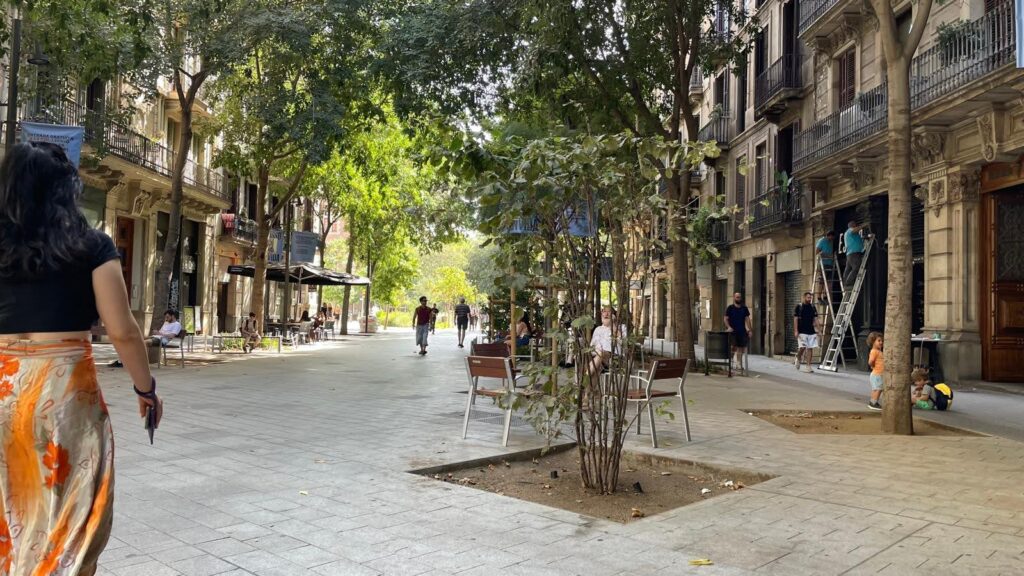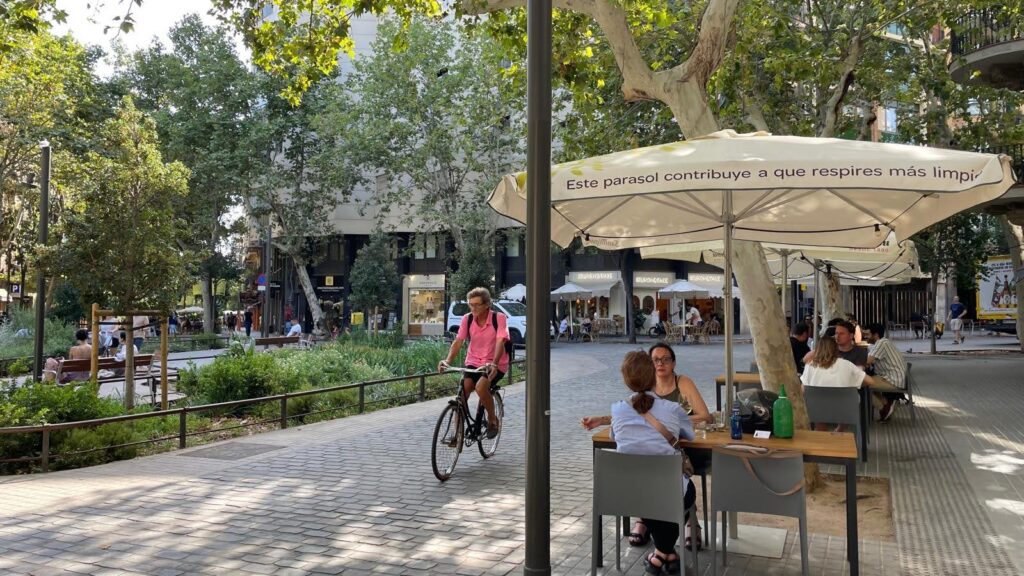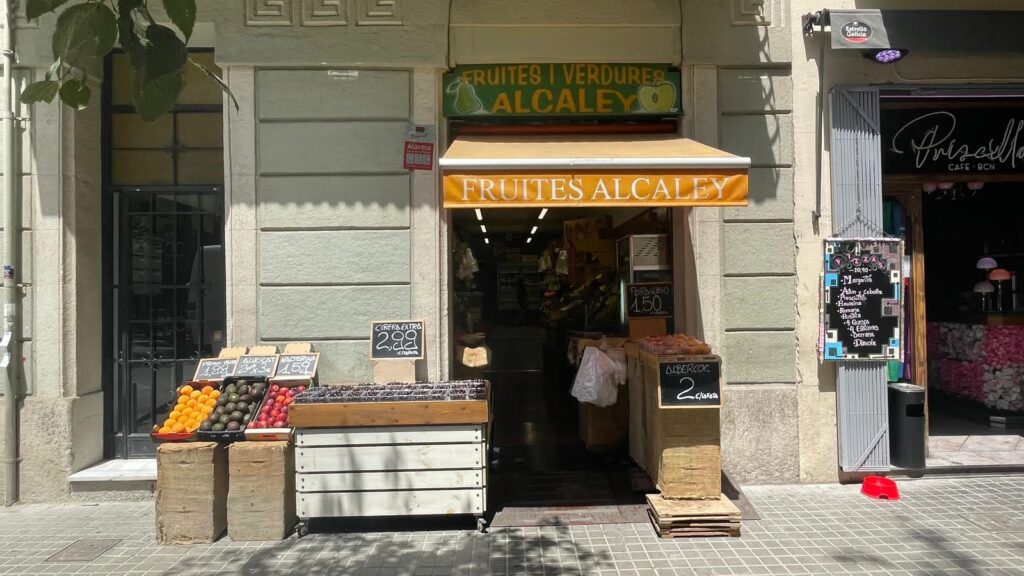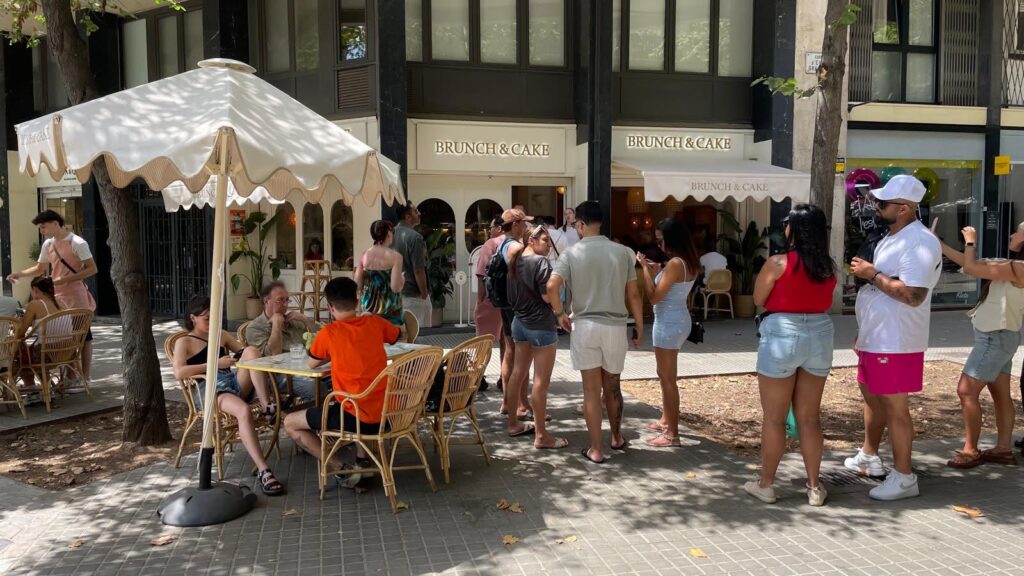After lunch, at a very hot time in Barcelona’s summer, there is rarely a ray of sunshine that hits the pavement of Carrer Consell de Cent directly. Anyone strolling along this city thoroughfare forgets they are in a large metropolis when they look up and see the treetops on either side of the street melting together to form a continuous green roof. At ground level, there are plenty of benches and tables where the locals sit and chat, the home-deliverers rest by their bicycles and the tourists, who make English as audible as Spanish or Catalan.

The two kilometres and more than seven hundred metres of Carrer Consell de Cent run through Barcelona’s Eixample, linking the famous Passeig de Sant Joan with the Parc Joan Miró, in the vicinity of Plaça d’Espanya. Heir to the Cerdá Plan, which in the mid-19th century began to build the modern part of the city in a grid of perfectly parallel and perpendicular streets, Carrer Consell de Cent describes a straight-line northwards from the historic centre of the Catalan capital. However, crossing it from one end to the other has become the exclusive privilege of pedestrians, scooters and bicycles.

As part of its green urban planning project, Barcelona City Council has launched the innovative concept of ‘superilles’ (or super islands), neighbourhood areas where road traffic is very limited, prioritising pedestrian movement, with the aim of promoting “a healthy, greener, fairer and safer public space that favours social relations and the neighbourhood economy”, according to Barcelona City Council. In Carrer Consell de Cent, the asphalt has disappeared, the pavement is the same over its entire width and is tailor-made for pedestrians. Traffic cannot exceed 10 kilometres per hour and, with a few exceptions, at the end of each block the section of the road forces drivers to go in the direction of the perpendicular street. At present, it is not possible to cross Consell de Cent for more than 100 metres at a time, whereas before the reform it was possible to cross more than 20 blocks without turning.
The car parks are now temporary, and the terraces have been used to gain space on the street. The green axis of Consell de Cent is complemented by three smaller perpendicular axes in Carrer de Girona, Carrer de Rocafort and Carrer Comte Borrell. Between the latter and Passeig de Gràcia is the part of the route that probably earned Time Out magazine the honour of being the tenth coolest street in the world. Galleries, coworking spaces and restaurants multiply in this area.
However, there are exceptions. In the busiest part of the street, several crates of peaches, avocados, nectarines and grapes stand out on the door that flanks them, where a yellow awning reads ‘Fruites Alcaley’. António has been working in the family business for 25 years and from behind the counter where he speaks, he has witnessed the transformation of the street. ‘It’s been good for business’, he says, “before there were cars passing by, now the street is nicer, and we have more visibility”.

Green, but for whom?
The promenade on Carrer Consell de Cent is a popular product among the masses of tourists who visit Barcelona every year – in 2023 alone, 26 million visitors stayed overnight in the Barcelona area, according to official figures. Testimony to this are the numerous establishments advertising brunches in English with menus quite alien to Spanish cuisine, in which avocado (a tropical fruit that has recently gained popularity around the world) is a guaranteed presence.
And as neighbourhood protests against over-tourism in the Catalan capital grow louder, questions are being asked about who the real beneficiaries of the city’s urban projects are. In this sense, Barcelona is one of the European cities that has been the subject of most academic research on the impact that the implementation of new green public spaces can have on the exclusion or displacement of part of the population from the surrounding areas. This is known as green gentrification, in which green projects end up revaluing the areas where they are implemented to the point of marginalising the most economically vulnerable inhabitants.

However, less than two years after the completion of the works, there is still no data on the impact that the transformation of Carrer Consell de Cent may have had on housing in the neighbourhood. The Barcelona Institute of Statistics only has data on the price of rents and the demographics of the inhabitants of each neighbourhood for the period between 2015 and 2021, which ends before the project is completed. However, we can point out that in the neighbourhoods crossed by the street (La Dreta de L’Eixample, L’Antiga Esquerra de L’Eixample and La Nova Esquerra de L’Eixample) the average annual rent per person has risen by at least 2,250 euros in the seven years analysed, in line with the process of unsustainable housing price rises.
In the eyes of Antonio, who has lived day by day the metamorphosis of the street between boxes of vegetables and fruit, the profile of the passers-by does not seem to have changed much and he assures us that ‘the customers from before are still the same’. He comments that this is a street where the locals do their shopping and socialise, but that it is frequented above all by ‘many people from all over the city who like to come here to stroll’.



